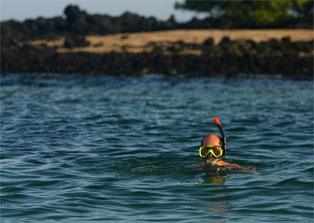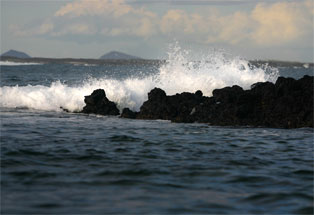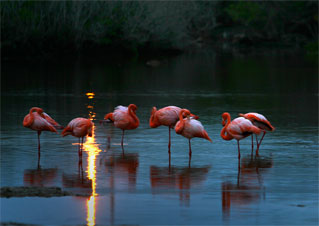
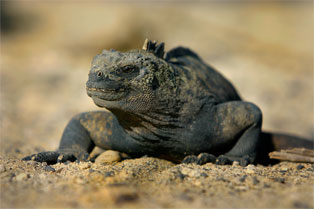
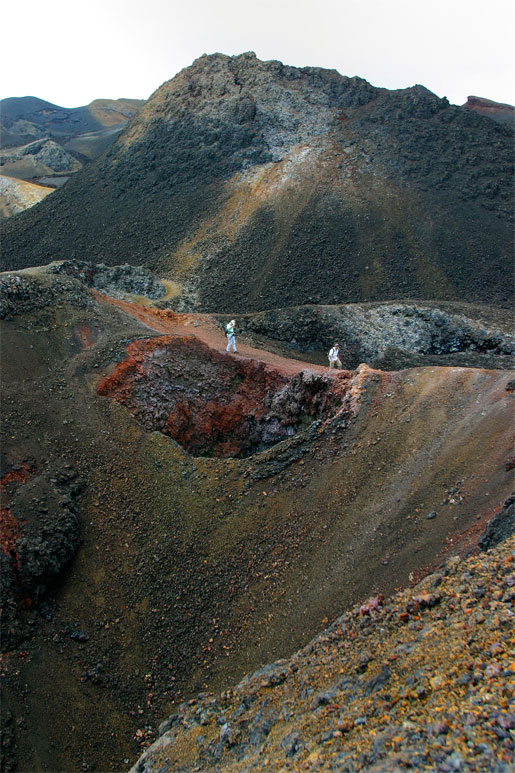
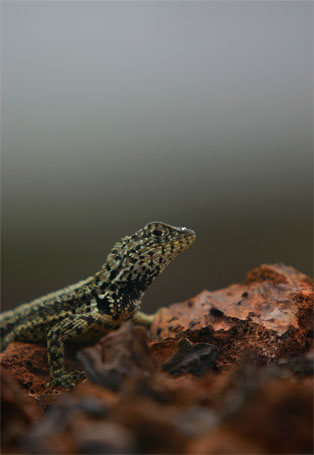
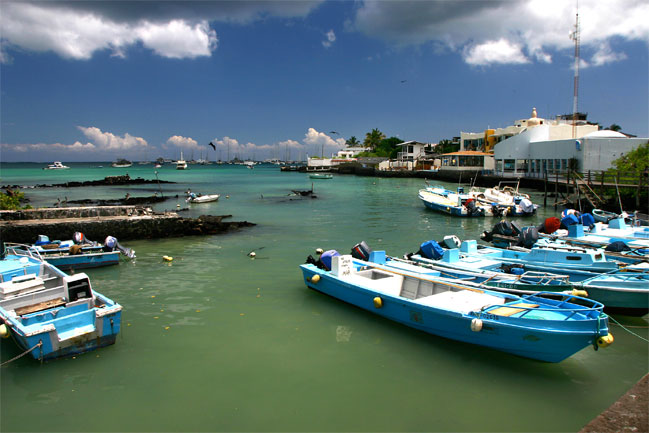
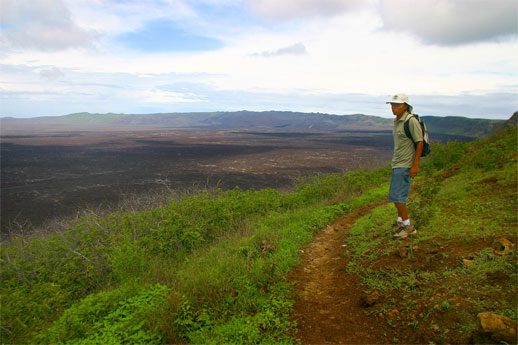
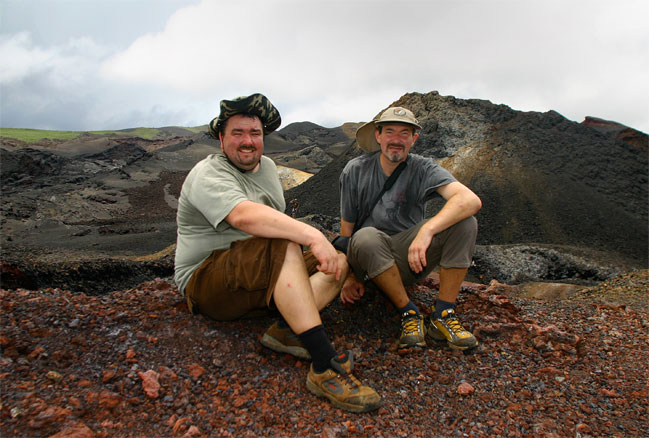
Then we had to get through the red tape required to clear in. Almost 500 dollars later, and under orders not to move anywhere unless we had a certified guide at 100-200 dollars a day with us, we were finally ready to explore the islands for a few days. By then, we had received so many weird instructions from the port captain and the “agent” that he ordered us to use for clearing in, that we had almost thrown the towel in. Apparently, Ecuador has a warning- registration- and surveillance system for yachts intending to visit the country, so advanced that yachties don’t know about it, and the navy has no clue as to how to use it. Subsequently, they use civilian agents, making a fat pile of cash doing the job that the military was supposed to do. Marvellous.
# The Galàpagos islands are situated approximately 1,000 kilometers west of Ecuador in South America. They form part of the territory of Ecuador. The archipelago consists of 13 islands and 34 rocks and skerries. The islands are volcanic, and some of the volcanoes are still active. The highest peak is the volcano Wolf, with some 1707 meters above sea level. The vegetation is sparse.
# The Galàpagos islands are situated straight below the Equator, and the climate is tropical. The hottest season is from January to April. Tourism is the main industry in the islands. Around 60,000 people visit the islands annually.
# Around 18,000 people reside permanently on the islands, most of them Ecuadorians. For many years, also Norwegians lived in the Galàpagos, but most of the immigrants are now dead or have left.
# The person that made the islands famous, was Charles Darwin He visited the archipelago with the ship “Beagle” in 1835, and later on he introduced his thesis about evolution, that was based largely on his studies of the fauna and flora in the Galàpagos. The archipelago is a national park today, and is listed on UNESCOs world heritage list.
# The currency in use is US dollar. VISA is widely accepted by restaurants, shops and businesses, and there are several ATMs available, in several of the largest islands. .
(Sources: World info Zone, CIA World fact book)

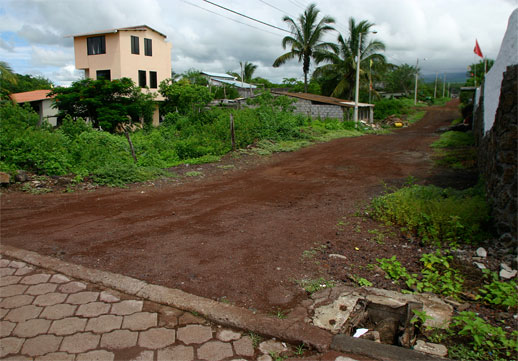
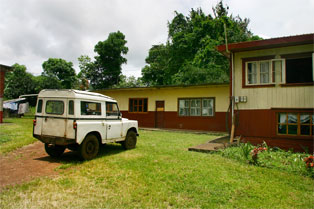
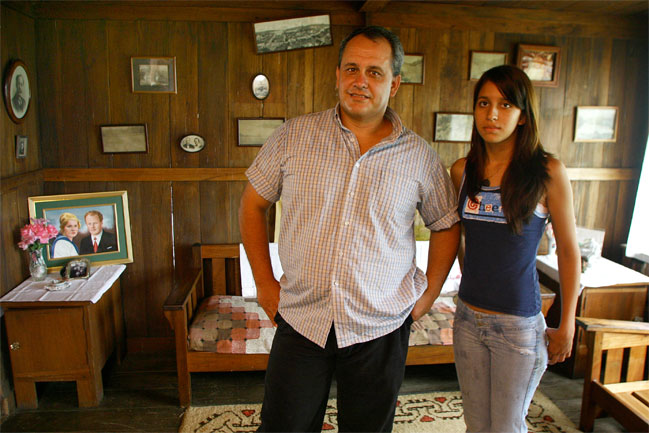
During the Norwegian colonization in the 1920s and 30s, many Norwegians emigrated to Galàpagos seekingtheir fortune. Not many of them are left in the islands today. But one of them is Thorvaldo Kastdalen. He speaks fluently Norwegian, and has made his grandfathers farm, the “Vista del Mar”, into a museum. It reminds us of the Norwegian folk museum back home. Thorvaldo was kind enough to give us a tour around the museum, and many Norwegian artifacts met us as we wandered through the buildings. Thorvaldo has visited Norway, but is the only Norwegian-Galàpagosian in St. Cruz that speaks Norwegian and feels a strong familiarity with Norway.
Unfortunately, sex tourism, prostitution, overpopulation and mass tourism have made the UNESCO and other organisations raise the alarm, fearing that this little paradise 1,000 kilometers out to sea may completely disappear in the course of the coming decades. Unemployed Ecuadorians flood the islands, and the population is now up to almost 20,000 people. This in islands that weren’t permanently populated at all. Many are still on the dole, and live in slums, hoping to wet their beaks in the lucrative tourist-industry. In addition, natural phenomena like El Nino have made some marine species start migrating away from the Galàpagos. In a bid to ameliorate the situation, Ecuador has introduced an environmental fee for all tourists coming to the islands. The problem is that only 25 per cent of this money goes towards environmental issues, the rest is being squandered by an incompetent bureaucracy.
As the Underveis was at anchor in St. Cruz, both the ARC around the world and Blue Water rally came passing by, and the lagoon was crammed with sailing boats in all sizes, from all around the world. We enjoyed ourselves during our visit in the islands, knowing that as a yachtsman, one is far more environmental in ones travels, than people traveling by, say, airplane. But, ironically, as things have come to pass in the Galàpagos over the last decades, the best you can do in order to contribute to the preservation of this natural jewel, is simply not to go here.
